Checkerboard
A checkerboard (American English) or chequerboard (British English; see spelling differences) is a board of chequered pattern on which draughts (checkers) is played.[1] Most commonly, it consists of 64 squares (8×8) of alternating dark and light color, typically green and buff (official tournaments), black and red (consumer commercial), or black and white (printed diagrams). An 8×8 checkerboard is used to play many other games, including chess, whereby it is known as a chessboard. Other rectangular square-tiled boards are also often called checkerboards.
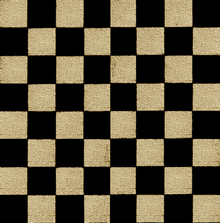
Games and puzzles using checkerboards
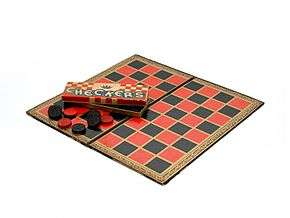
Martin Gardner featured puzzles based on checkerboards in his November 1962 Mathematical Games column in Scientific American. A square checkerboard with an alternating pattern is used for games including:
- Amazons
- Chapayev
- Chess and some of its variants (see chessboard)
- Czech draughts
- Draughts, also known as checkers
- Frisian draughts
- Gounki
- International draughts
- Italian draughts
- Lines of Action
- Pool checkers
- Russian checkers
The following games require an 8×8 board and are sometimes played on a chessboard.
- Arimaa
- Breakthrough
- Crossings
- Mak-yek
- Makruk
- Martian Chess
Mathematical description
Given a matrix with rows and columns, a function ,
or, alternatively,
The element is black and represents the lower left corner of the board.
Gallery
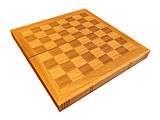 An empty 8×8 checkerboard
An empty 8×8 checkerboard An empty 8×8 checkerboard diagram
An empty 8×8 checkerboard diagram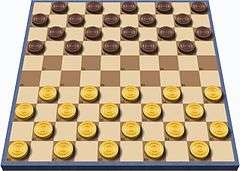 The opening setup of international draughts, which uses a 10×10 checkerboard
The opening setup of international draughts, which uses a 10×10 checkerboard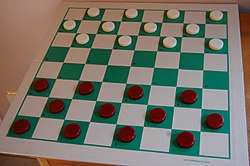 English draughts tournament standard
English draughts tournament standard
References
| Look up checkerboard in Wiktionary, the free dictionary. |